Francesca Diaco: Palau
Palau, an island nation located in the Western Pacific Ocean, consists of 250 islands spanning 180 square miles and makes up the western chain of the Caroline Islands in Micronesia.
Known as one of the seven wonders of the underwater world, Palau is home to over 1330 species of fish and 700 species of coral and is where three of the world’s main ocean currents converge. The reefs are full of life and color and host a large number of pelagic species, massive schools of fish, a healthy shark population, turtles, mantas and so much more. The underwater topography is quite diverse offering walls covered in soft coral, channels, corners, caverns and a few WWII wrecks to explore as well.
One of the most inspiring things about Palau is how successful their protected marine areas have been, which of course is great news for divers. About two years ago, Palau designated an impressive 193,000 square miles as a fully protected marine reserve, making it the sixth largest in the world. In this reserve, no fishing or mining can take place, which provides a sanctuary for fish to feed and reproduce. But the best news is that a recent scientific report of the region can offer data to support that it’s really working.
In September 2014, a study of Palau’s marine reserve was conducted by individuals from National Geographic, the Palau International Coral Reef Center, and a number of esteemed universities and found that the protected waters had twice the number of fish of unprotected waters and fives times the amount of predatory fish, effectively increasing the biomass of fish in the reserve. This coincides with findings of marine protected areas (MPA’s) in other parts of the world and is extremely encouraging news, which will hopefully lead to the creation of more protected areas.
With an inherent conservation culture and strong support from local communities and government, there is every reason to believe that Palau’s waters and ecosystem will go from strength to strength and be a diver’s paradise for many years to come.
You can find more of Francesca’s images here. She also owns Roatan Underwater Photography and Fisheye Expeditions.
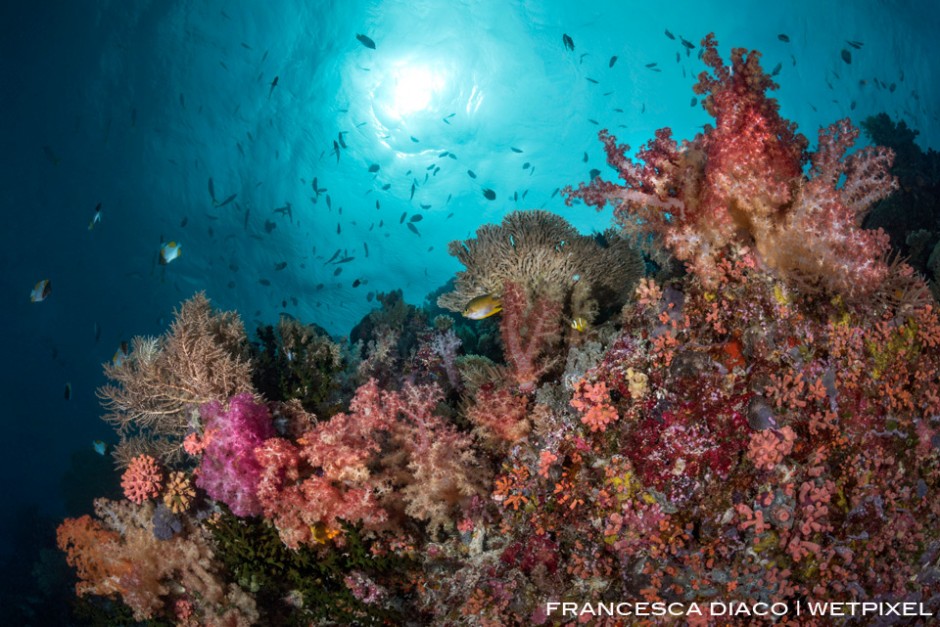
Loads of reef fish and wide variety of hard and soft coral can be found at Big Drop Off and all around Palau's reefs.
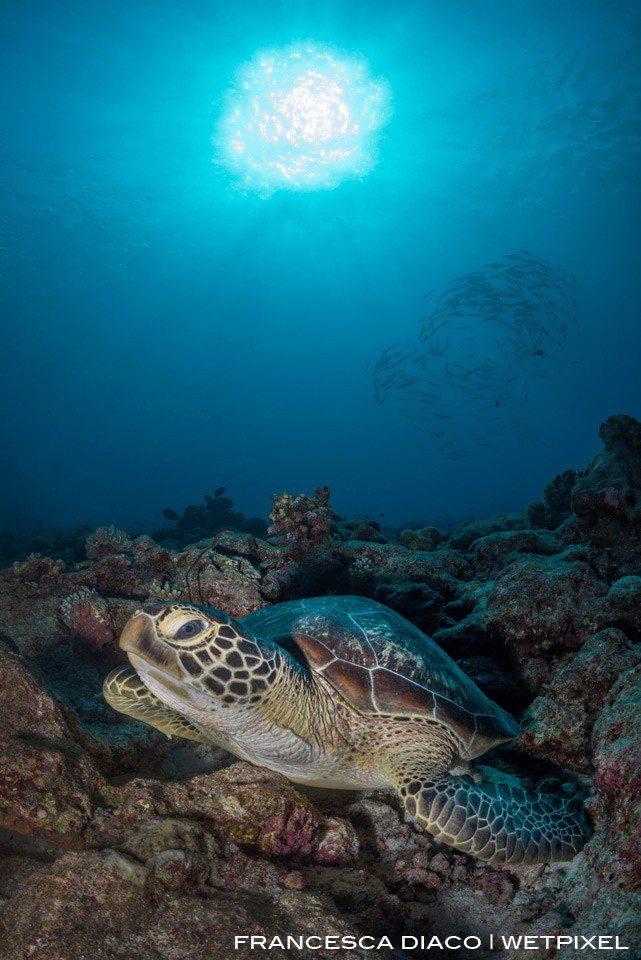
A turtle (Chelonia mydas) takes a rest on top of the reef at New Drop Off.

A massive school of Bigeye Trevally (Caranx sexfasciatus) move in unison forming the shape of a heart on the outside of Ulong Channel.
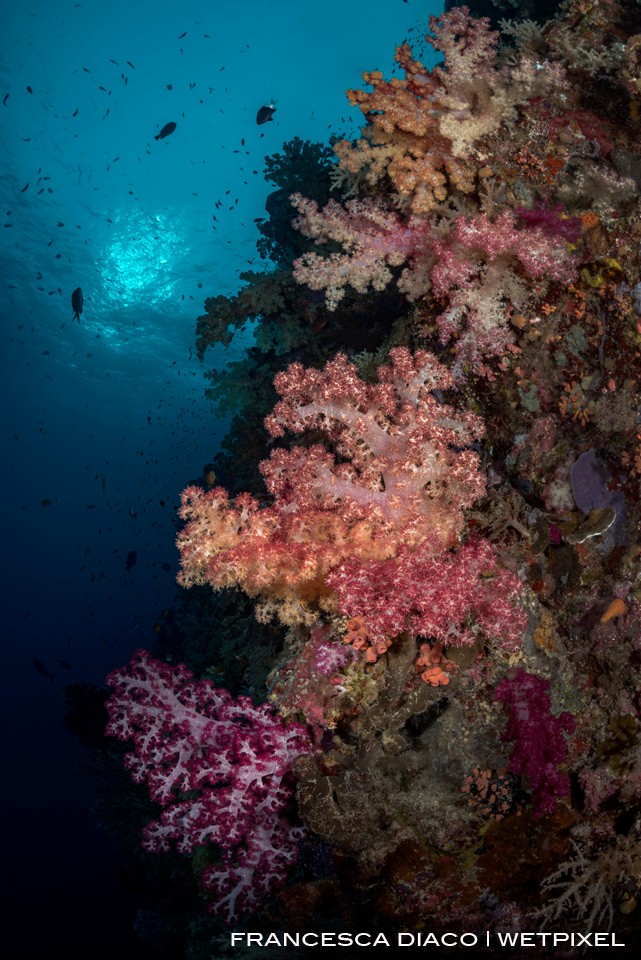
A wide variety of colorful and healthy soft coral decorates Palau's reefs, which is a feast for the eyes and great news for every wide angle photographer.
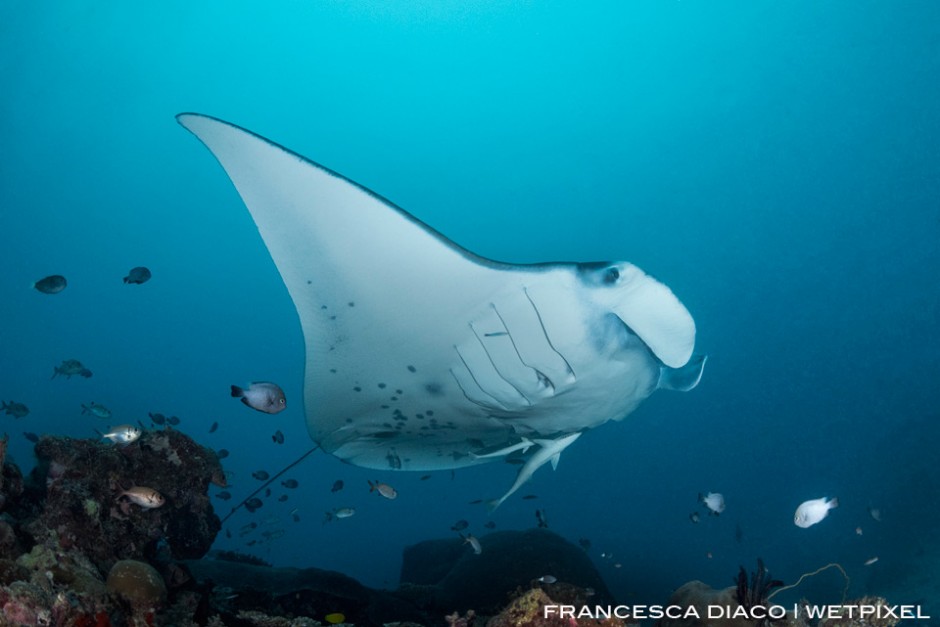
A beautiful Manta Ray (Manta alfredi) stops at a cleaning station at German Channel.
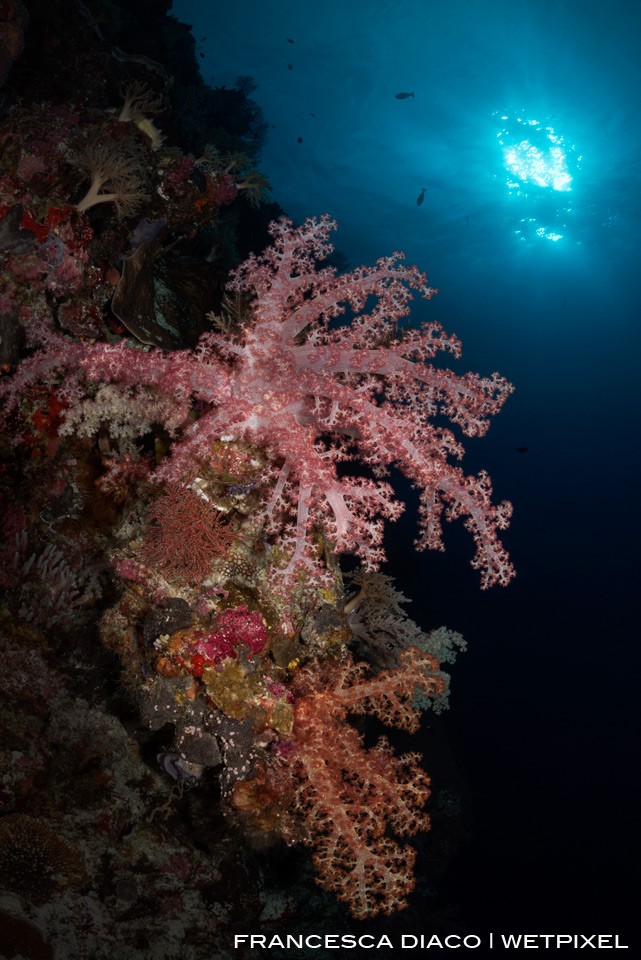
Colorful bushels of soft coral decorate the wall at New Drop Off.
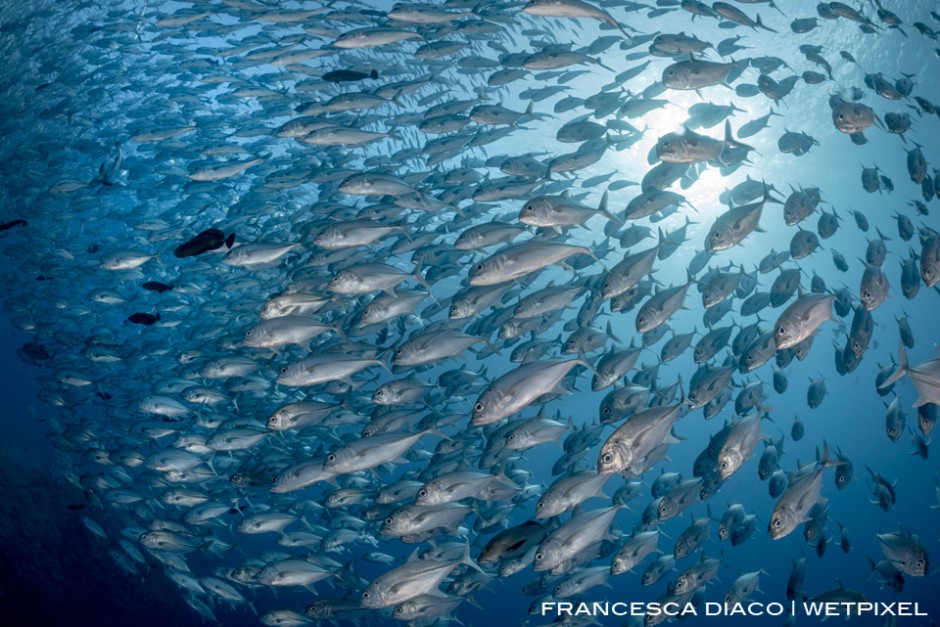
Massive schools of fish, such as this aggreagation of Bigeye Trevally (Caranx melampygus) gather at the world famous dive site Blue Corner.
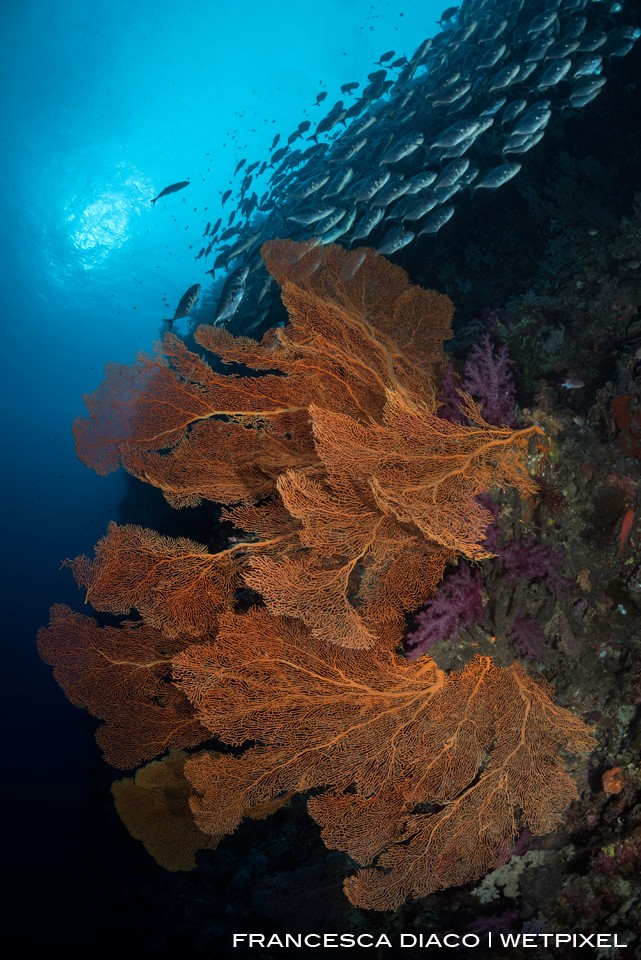
A large school of Blue Trevally (Carangoides ferdau) cruise by a giant Gorgonian Sea Fan at Siaes Corner.
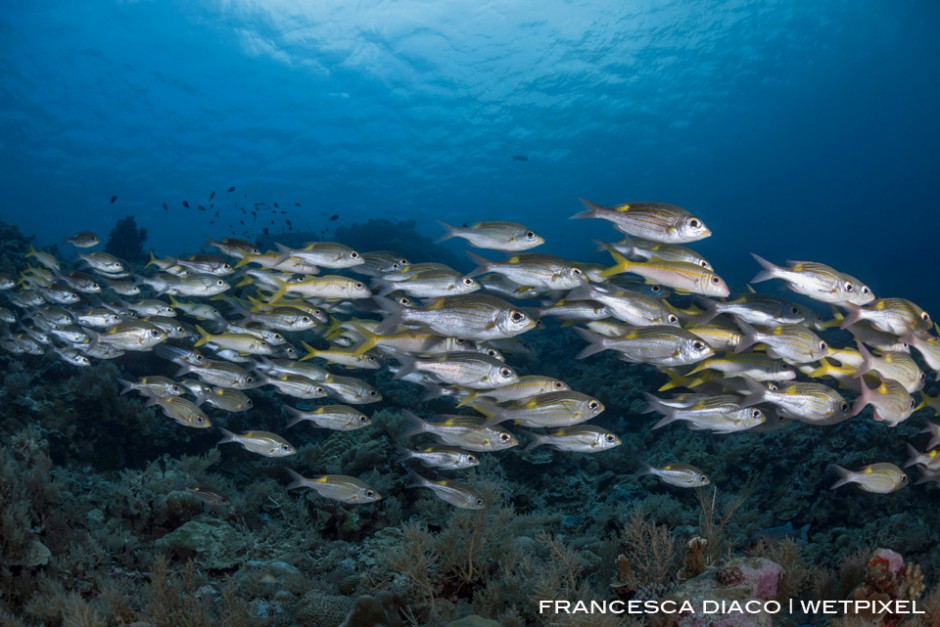
A school of Striped Large-Eye Bream (Gnathodentex aureolineatus) congregate in the shallows at Dexter's Wall.
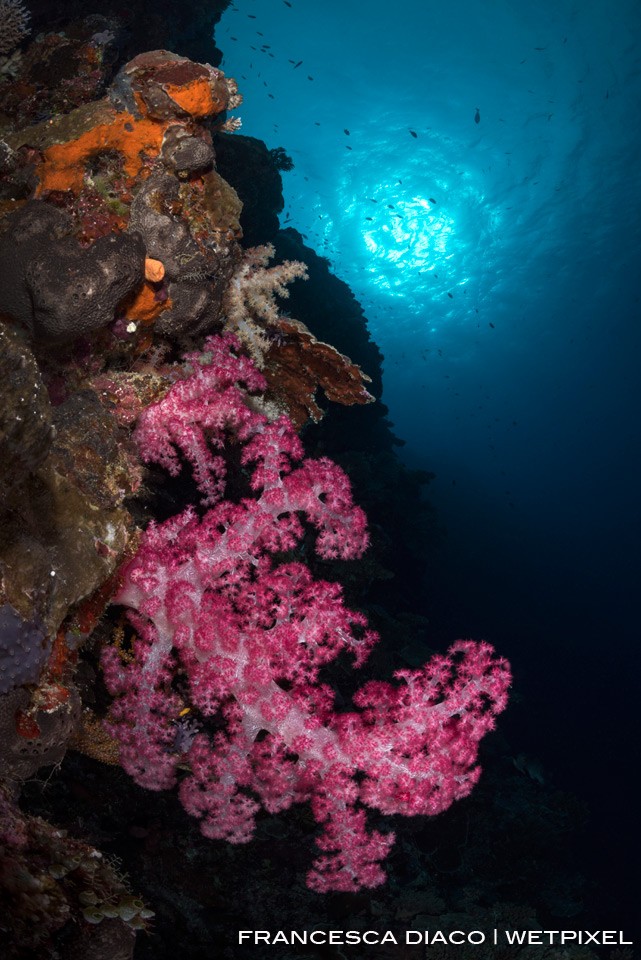
Colorful soft coral and dramatic topography offer a number of excellent wide angle opportunities on the outer wall near Siaes Tunnel.
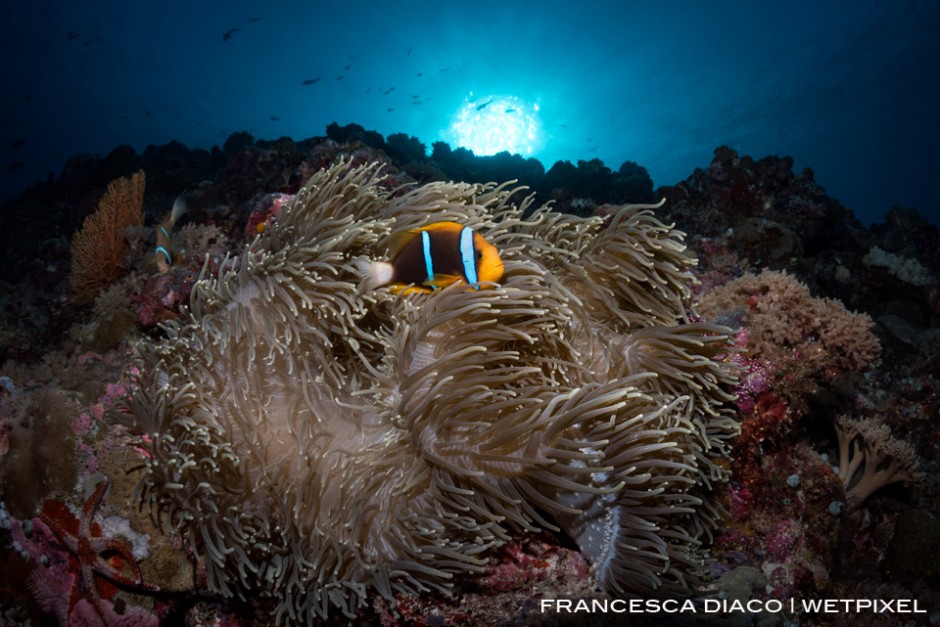
Clark's Anenomefish (Amphiprion clarkii) are commonly found in Palau and make great foreground subjects for any reef scene.
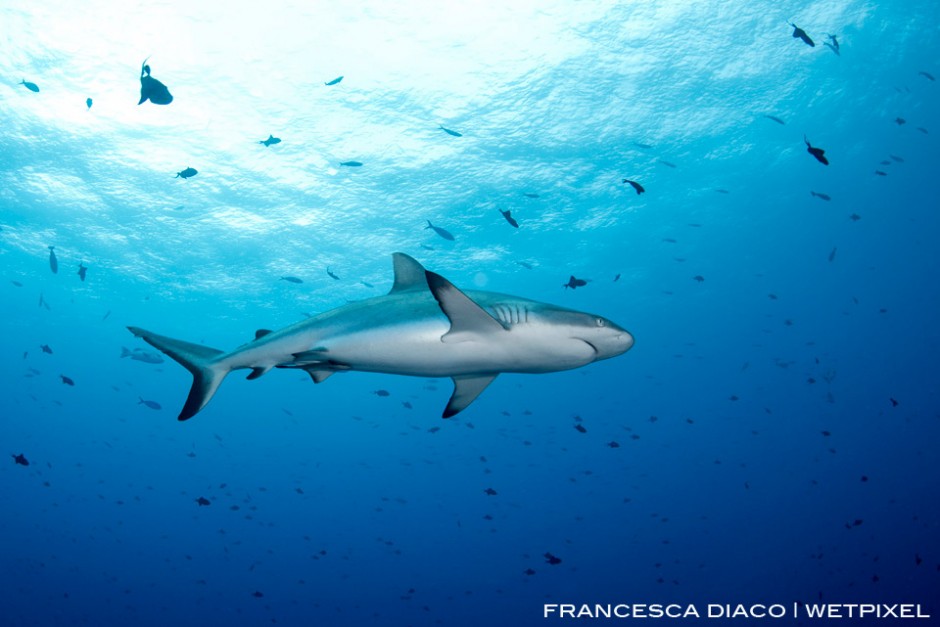
The large population of Grey Reef Sharks (Carcharhinus amblyrhynchos) is likely to continue to thrive and grow thanks to the success of the Marine Protected Areas in Palau.
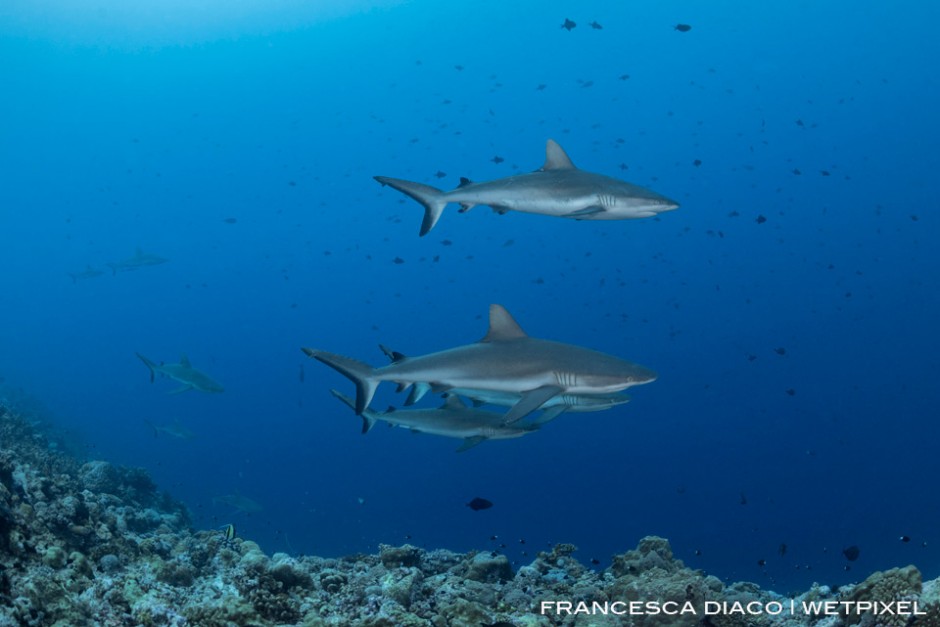
A pack of grey reef sharks (Carcharhinus amblyrhynchos) easliy cruise through the strong currents at Blue Corner.
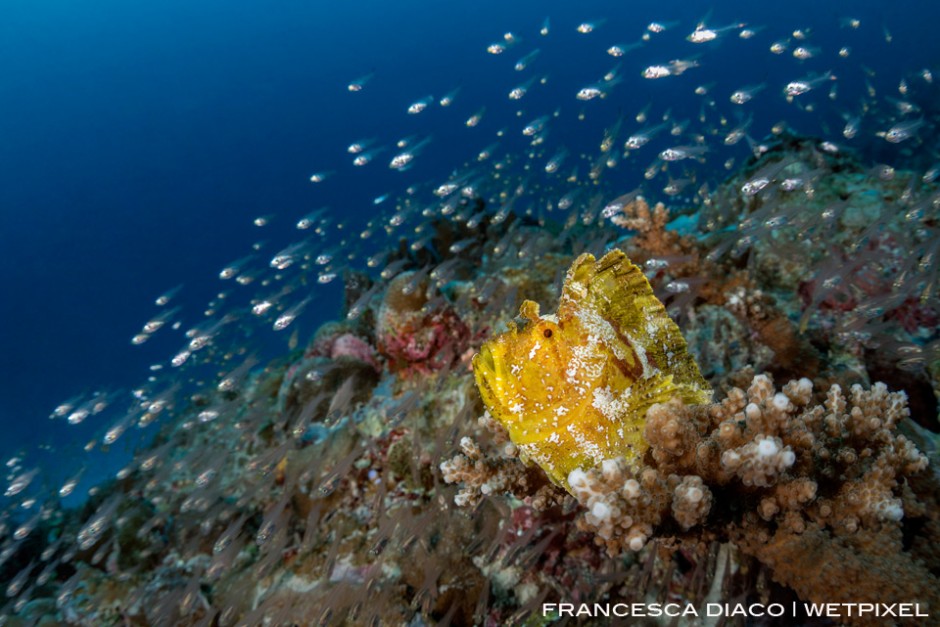
A Leaf Scorpionfish (Taenianotus triancanthus) sits on top a bommie surrounded in glassfish at Sandy Paradise.

A large gorgonian is the perfect frame for this diver exploring the entrance of Saies Tunnel.

A large school of Crescent-Tail Bigeyes (Priacanthus hamrur) congrate on the inside of Ulong Channel.
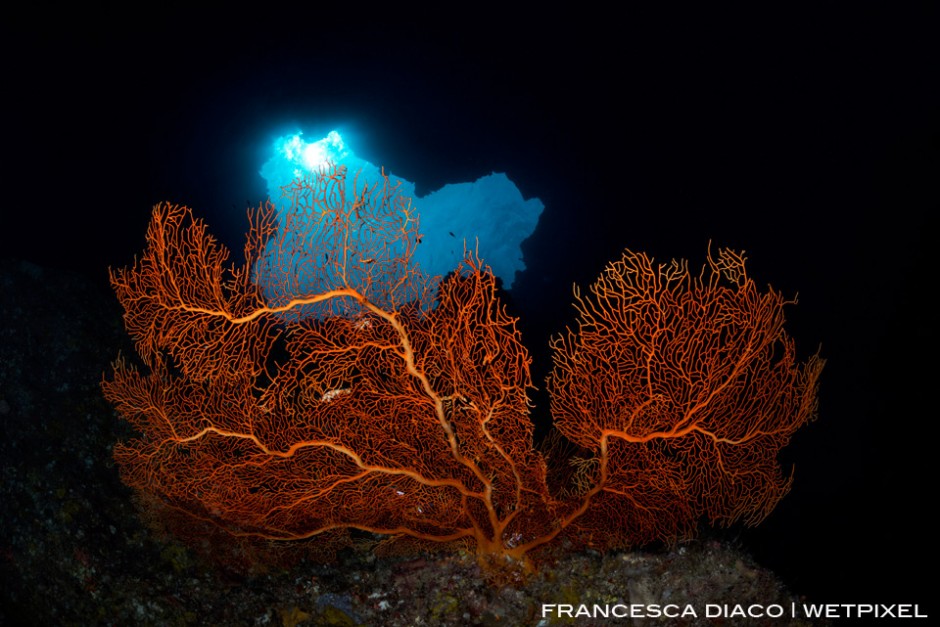
A large Gorgonian Sea Fan provides a colorful focal point inside the cavern at Blue Holes.
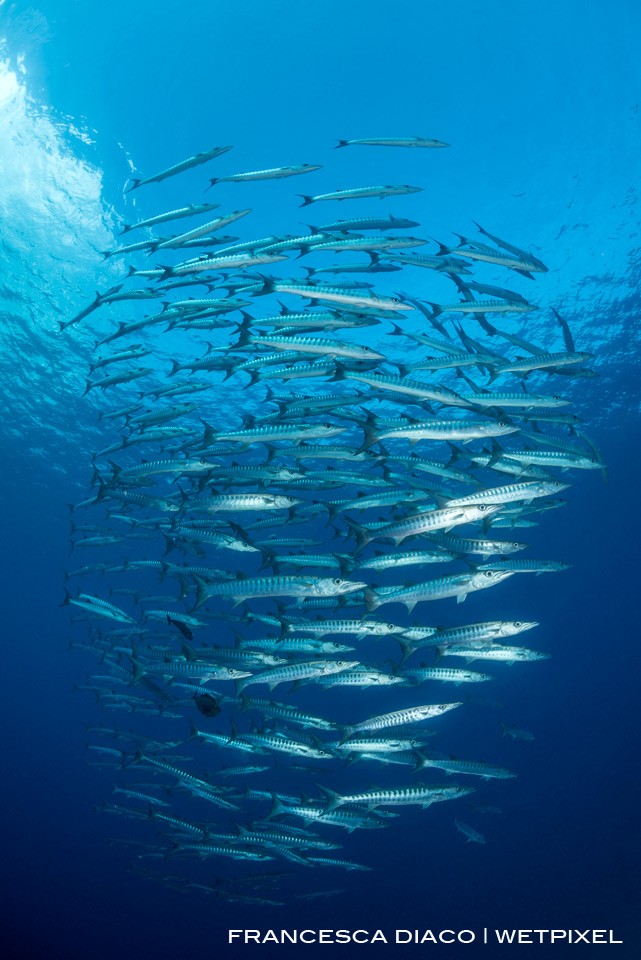
A school of Chevron Barracuda (Sphyraena qenie) forms a perfect cone in the water column.
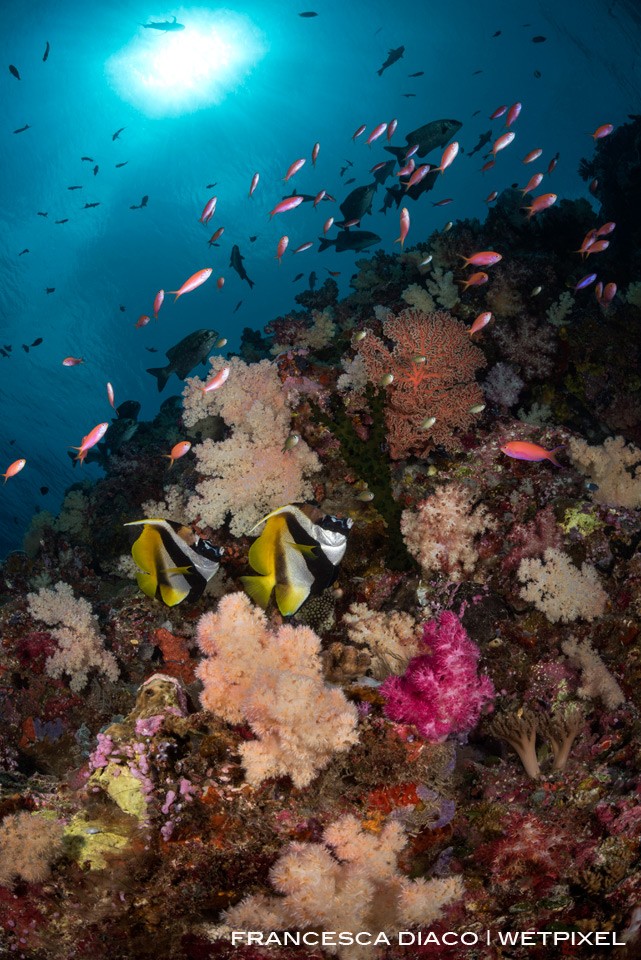
A pair of Masked Bannerfish (Heniochus monoceros) cruise the colorful and healthy reef at Turtle Cove.
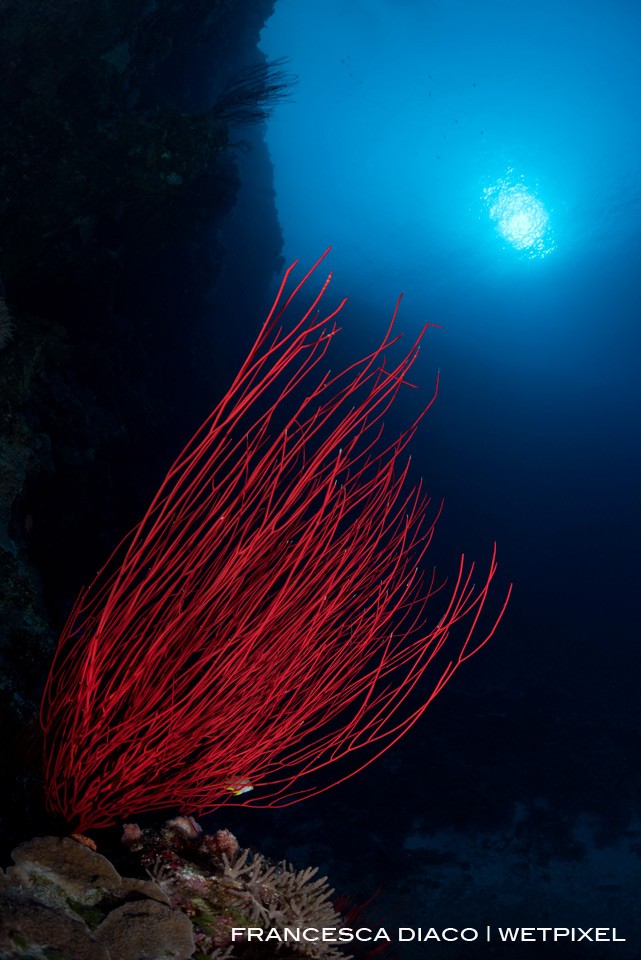
ARed Sea Whips offer a colorful contrast to the deep blue water and dramatic wall outside Virgin Blue Hole.